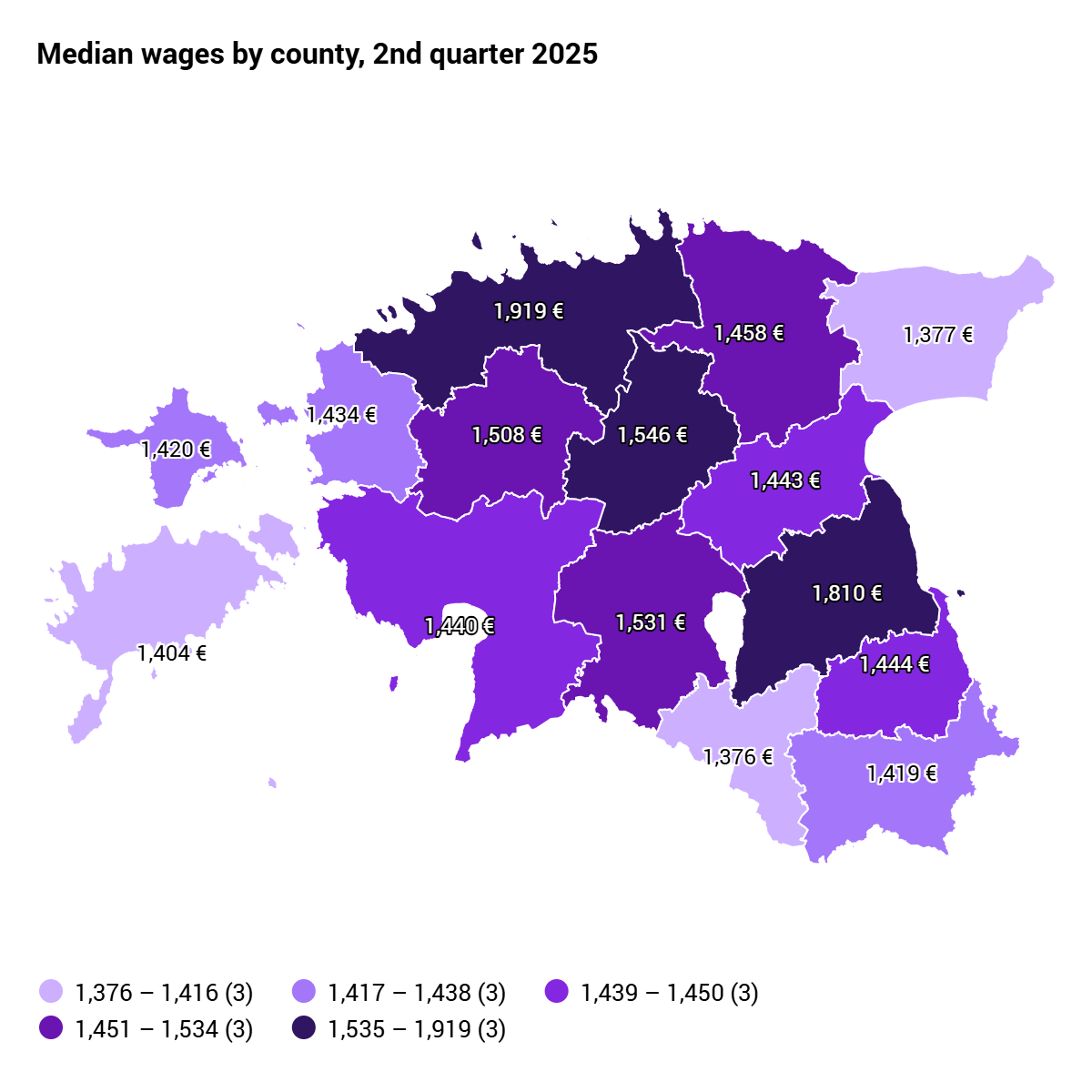Revised data: average wages and salaries were €2126 in the second quarter
According to Statistics Estonia's revised data, in the second quarter of 2025, the average monthly gross wages and salaries were €2,126, which is 5.9% higher than in the second quarter of 2024.
In the second quarter of 2025, the average monthly gross wages and salaries were the highest in Tallinn (€2,479), in Harju county (€2,365), and in Tartu county (€2,175). “Compared with the second quarter of last year, the biggest increase in wages and salaries was seen in Põlva county (7.7%) and Rapla county (7%). The smallest wage increase was registered in Ida-Viru county (3.8%),” said Sigrid Saagpakk, analyst at Statistics Estonia.
In this year's second quarter, the average monthly gross wages and salaries were the highest in information and communication (€3,704), financial and insurance activities (€3,389), and electricity, gas, steam and air conditioning supply (€3,164). The lowest average wages and salaries were registered in accommodation and food service activities at €1,328.
The analyst noted that the biggest rise in average gross wages compared with the second quarter of 2024 occurred in agriculture (13%). Year on year, the economic activity with the most modest increase in average gross wages was electricity, gas, steam and air conditioning supply (0.8%).
With regard to ownership, the year-on-year increase in wages and salaries was 5.7% in state enterprises, organisations, and institutions, 2.7% in local government institutions, 5.4% in Estonian private entities, and 8.3% in foreign private entities.
The median of gross wages (salaries) is the wage level at which half of the employees earn less than that level and half earn more than that level. The median wages were €1,734 in the second quarter this year.
In the second quarter, the largest number of employees – 100,330 – worked in manufacturing, representing 16.9% of all employees. This was followed by wholesale and retail trade (incl. repair of motor vehicles and motorcycles) with 88,090 employees, education with 64,870 employees, and human health and social work activities with 48,870 employees.
Since the first quarter of 2023, Statistics Estonia uses data from the employment register of the Tax and Customs Board and the income and social tax declarations to publish the average wages and salaries. People working under employment contracts, the Civil Service Act*, and service contracts are included.
* Excluding employees in the areas of governance of the Ministry of Defence and the Ministry of the Interior.
More detailed data have been published in the wages and salaries and labour costs section on our website.
When using Statistics Estonia’s data and graphs, please indicate the source.
For further information:
Susann Kivi
Media Relations Manager
Marketing and Dissemination Department
Statistics Estonia
Tel +372 5696 6484
press [at] stat.ee (press[at]stat[dot]ee)
